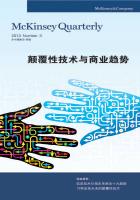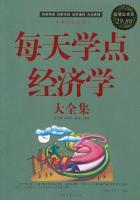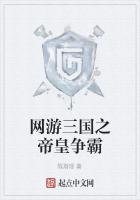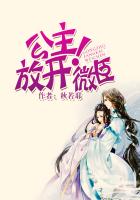[1]. All rice crops have been classified as common crops, and because they are predominant in Chinese agriculture, a separation is usually made between rice and other common crops in statistical sources. See the footnote attached to table 3.
[2]. Of the forty-eight common types of crop rotation listed in Lu, Analysis of Farm Family Economy, pp. 124-34, rice exists in most, frequently with various common crops. Special crops and vegetables exist in only a few.
[3]. Note, however, that the margin for the increase in the rate of rice planting may be found not only in farms where one crop of rice was grown per year, but also in some farms where one crop of rice was grown in two or three years.
[4]. See Tsung-han Shen, Agricultural Development on Taiwan since World War II (New York: Comstock Publishing Associates, 1964), pp. 174-95. See also D. H. Grist, Rice (London: Longmans, Green and Co., 1953).
[5]. Department of Agriculture and Forestry, Taiwan Agricultural Yearbook, 1952 Edition (Taiwan: Provincial Government, 1952), sec. 3. 1. Comparing these two percentages with the total increase of 9.9 percent, it becomes clear that paddy rice was by far the predominant rice crop.
[6]. See JCRR, Taiwan Agricultural Statistics, 1901-1955 (Taipei, 1961), p. 12. Not all paddy rice had been double-cropping, or there would have been no increase at all in crop area for paddy rice.
[7]. Shen, Agricultural Development on Taiwan, pp. 174-95.
[8]. Ibid.
[9]. DAF, Taiwan Agricultural Yearbook, 1952, sec. 3. 1.
[10]. See DAF, Yearbook 1949, 1950, 1951 and 1952, sec. 4. In particular, the area actually damaged was roughly the same every year from 1948 to 1951.
[11]. DAF, Yearbook 1952, sec. 3. 1.
[12]. Ibid., sec. 3. 1. D. For paddy rice, recall that the date of counting mixed up the first and the second crops.
[13]. Ibid., sec. 3. 1.
[14]. Ibid.
[15]. Such a separation is not possible with the available information. For more detailed treatments of the marginal crops, an attempt will be made to rank prefectures.
[16]. DAF, Yearbook 1952, Sec. 3. 2.
C.Output Responses of Marginal Crops
Before we turn our attention to the behavior of three types of marginal crops, let us set the stage on which the responses of these crops may be observed in more convincing detail. The lack of output data separated for tenant and owner farms makes it difficult to confirm the implication that output responses in the two types of farms move in opposite directions. One method I employ to measure the relative responses is to rank the prefectures in Taiwan according to the degree to which their farming resources were affected by the share restriction, so that a prefecture of the higher order is expected to respond with greater proportional changes in the marginal crops, according to my theoretical predictions.
The Prefecture Ranking
It should be clear that the degree to which a prefecture was affected by the share restriction depends on two factors: (a) the proportion of farm land affected, and (b) the initial market rental percentage, since the flat rate control led to a greater rental share reduction if the original percentage had been higher. Our ranking problem is greatly simplified by the fact that (a) and (b) are positively related. In table 4, columns 4 and 6 reveal that tenancy occurred more frequently in paddy fields. The exception, Hwalien, can be explained by the predominance of upland rice crops in this prefecture. Columns 4 and 6, together with the proportionate acreage of paddy fields and dry land (not shown) determine the percentage values of column 2.
A comparison of columns 2 and 3 reveals that, since the reduced rental was a maximum uniform 37.5 percent of the annual yield for all tenant contracts, not all tenant farms were affected. The differences in these two columns depend primarily on the proportions of paddy fields and dry land under tenancy. Paddy fields are generally more fertile and had higher market rental percentages than dry land.[1] As is seen in columns 4 through 7, paddy fields were far more vulnerable to the flat rate control than was dry land. Columns 5 and 7, together with the proportionate acreage of paddy fields and dry land affected (not shown), determine the percentage values of column 3.
Since prefectures with proportionally more paddy fields were associated with a higher frequency of tenancy, and since paddy fields were associated with higher market rental percentages, the values in column 3 render reliable criteria for the ranking of prefectures in order of the degree to which they were affected. Such a ranking, however, is not without ambiguity. According to most sources, Sinchu and Taipei had the highest rental percentages; according to another, Taichung was the most fertile.[2] The disagreement stems from the fact that no source is speaking of a weighted average of the rental percentages, and heterogeneous land with different rental percentages in each prefecture makes comparisons difficult. Our solution here is to classify Sinchu, Taipei, and Taichung in the same group. Thus, in group I we have prefectures where we are certain that higher rentals had prevailed, and that private land resources were affected in the greatest proportions.[3] In similar fashion, we place Kaoshiung and Tainan in group II, and Hwalien, Taitung, and Penghu in group III. The Five Cities, which occupied small areas in Taiwan, will be excluded because of the massive computations required.[4] Ranking by the criteria of market rental percentages and proportions of private land affected is also in accordance with the proportion of farming households affected. The latter is shown in column 8. We do not, however, have information on the number of farmers affected, which would be the more appropriate measure of labor resources.[5]
Three Types of Marginal Crops















